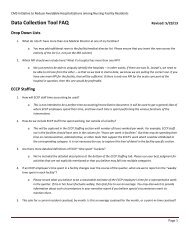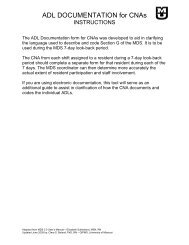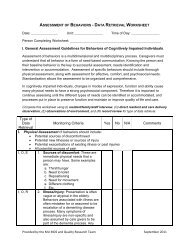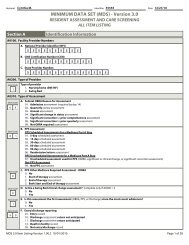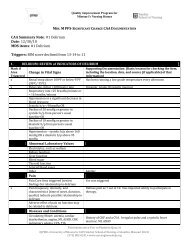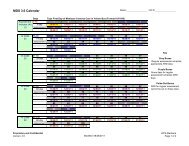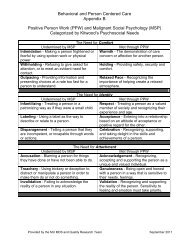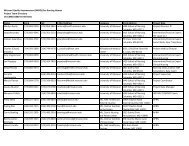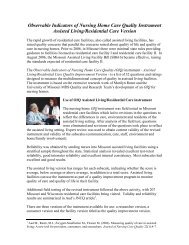National Guideline Clearinghouse (NGC). Guideline synthesis
National Guideline Clearinghouse (NGC). Guideline synthesis
National Guideline Clearinghouse (NGC). Guideline synthesis
You also want an ePaper? Increase the reach of your titles
YUMPU automatically turns print PDFs into web optimized ePapers that Google loves.
High risk: score of 10 to 12<br />
Same as above but add the following:<br />
Increase the turning frequency.<br />
Do small shifts of position.<br />
Very high risk: score of 9 or below<br />
Same as above but use a pressure relieving surface<br />
Manage moisture, nutrition, and friction/shear.<br />
RNAO<br />
(2005)<br />
For clients with an identified risk for pressure ulcer development,<br />
minimize pressure through the immediate use of a positioning<br />
schedule.<br />
(Level of Evidence = IV)<br />
Use proper positioning, transferring, and turning techniques. Consult<br />
Occupational Therapy/Physiotherapy (OT/PT) regarding transfer and<br />
positioning techniques and devices to reduce friction and shear and to<br />
optimize client independence.<br />
(Level of Evidence = IV)<br />
Clients at risk of developing a pressure ulcer should not remain on a<br />
standard mattress. A replacement mattress with low interface pressure,<br />
such as high-density foam, should be used.<br />
(Level of Evidence = Ia)<br />
For high risk clients experiencing surgical intervention, the use of<br />
pressure-relieving surfaces intraoperatively should be considered.<br />
(Level of Evidence = Ia)<br />
For individuals restricted to bed:<br />
Utilize an interdisciplinary approach to plan care.<br />
Use devices to enable independent positioning, lifting, and<br />
transfers (e.g., trapeze, transfer board, bed rails).<br />
Reposition at least every 2 hours or sooner if at high risk.<br />
Use pillows or foam wedges to avoid contact between bony<br />
prominences.<br />
Use devices to totally relieve pressure on the heels and bony<br />
prominences of the feet.<br />
A 30 degree turn to either side is recommended to avoid<br />
positioning directly on the trochanter.<br />
Reduce shearing forces by maintaining the head of the bed at the<br />
8 of 17



